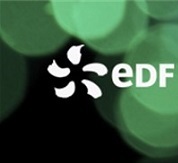A retrospective of 35 years of old dwellings refurbishment to enlighten the future of energy efficiency in buildings: what and who benefits?
Résumé
Before the first oil crisis, the majority of new buildings in Euro-pean countries were constructed without any energy efficiency obligation. In those times, Space Heating (SH) consumptions accounted for more than 80 % of the total energy consumption of residential sector. In France, SH in dwellings was rated at 300 kWh fe /(year.m²), final energy. 40 years later, SH is only 60 % of total consumptions and the unitary SH consumptions have been cut by almost 50 %. Unitary decrease has been sufficiently strong to decrease the total SH consumptions despite increases of numbers and size of dwellings and standards of comfort. This paper studies the causes of this spectacular decrease: what are the respective responsibilities of demolition, refur-bishment of existing housing stock, efficiency of new dwellings and daily behaviour? A particular attention is given to pre-1975 dwelling stock. The pre-1975 French dwelling stock still represents more than 50 % of Primary Residences (PR) in France and 2/3 of SH con-sumptions. Due to slow renewal of the stock, it will constitute almost 40 % of PR by 2050 in a Business as Usual Scenario. Understanding the past benefits of retrofitting of this specific stock is important to forecast future consumptions as well as to design future policies. Our analysis is based on SH energy consumptions time-series from 1973 to 2012 of dwelling's; different vintages and various building census. In our paper, behavioural evolutions are quantified with the calculation of Space Heating Intensity Factors (SHIF). This indicator is the ratio between observed SH consumptions and EPC (Energy Performance Certificate) normative ones. SHIF is used in literature and considered as a proxy of households' behaviour regarding SH consumptions and thermal comfort. SHIF has been estimated for the pre-1975 dwelling stock by 1975 and by 2009 to determine if the increase of efficiency has been partly transformed in "increased" comfort or not. Quantifications of these four main identified drivers (demo-lition, refurbishment, new dwellings efficiency and behaviour) are proposed. Quite surprising results like evolutions of SHIF are discussed.
| Origine | Fichiers éditeurs autorisés sur une archive ouverte |
|---|
Loading...

